Lyman Lovejoy and Bill Ellison tirelessly
work to boost St. Clair County
Story by Paul South
Photos by Graham Hadley and Carol Pappas
Look around one of the top five fastest growing counties in the state, and it is hard to miss the work of two individuals who put county first and profits second. Make no mistake, both are successes in their careers, but they are strong forces for progress, envisioning what can be and becoming the catalysts to make it happen.
Lyman Lovejoy, president and CEO of Lovejoy Realty, and Bill Ellison, president and CEO of I-20 Development Inc., not only share a friendship, they share common traits – perseverance, vision, heart, emphasis on teamwork, integrity, legacy and love of community. That’s what matters most to them, and St. Clair County has become the beneficiary.
A cheerleader for the county
For 47 years, Lyman Lovejoy has worked in real estate and development in the county as president and CEO of Lovejoy Realty. His company has built residential subdivisions and farms and helped young couples buy their first home. But he has done more, much more.
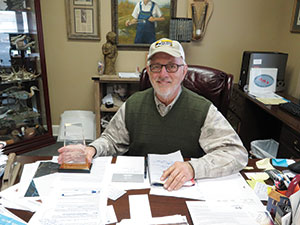 He makes it his business to get involved with every city government in the county as well as the County Commission, St. Clair Economic Development Council and other entities that share a common goal of moving forward. He knows every mayor and council member in the county by first name, and when he sees a need, he works to fill it.
He makes it his business to get involved with every city government in the county as well as the County Commission, St. Clair Economic Development Council and other entities that share a common goal of moving forward. He knows every mayor and council member in the county by first name, and when he sees a need, he works to fill it.
He is an essential part of the growth of Margaret, which grew by 278 percent between the 2000 and 2010 censuses. The next five years tacked on another 8 percentage points of growth. When the town needed a drug store, a dentist and a doctor, Lovejoy successfully recruited them to town. He’s done the same in other St. Clair communities.
Don Smith, executive director of the St. Clair EDC, remembers his surprising first encounter with Lovejoy, when Smith was interviewing for the assistant executive director’s role. He expected someone with a large portfolio of successes to be far different from the down-to-earth man he met.
“I expected him to be cutthroat and ruthless,” Smith said. “At the time, I thought it was hard to be that successful without kind of selling your soul a little bit. What I learned quickly was this: Lyman has one of the purest hearts of anyone I’ve ever met. He can’t lie. He tells you everything he’s thinking in the first two minutes after he meets you. He is about as transparent as anybody.”
“We do more business in some parts of the county than others,” said Lovejoy Realty’s Qualifying Broker Brian Camp, who is also Lovejoy’s son-in-law. “But Lyman is still out promoting the county because he loves the people. He loves the life that it promotes. He just thinks it’s a great way of life out here and wants everybody to know about it. He’s just all for the county and its people.”
He has served as chairman of the county’s Industrial Development Board, on the Alabama Real Estate Commission, and been honored by the SCEDC with its Chairman’s Award. Past recipients have included retired Alabama Power executive Tommy Bowers of Pell City, Circuit Judge Bill Weathington of Moody, Spencer Wideman of Ragland’s National Cement and others.
“He believes in a better tomorrow,” Smith said. “While some people see a vacant lot, he sees it’s going to be a piece of property that’s going to be home to a lovely neighborhood, or a store to serve the community or a church that’s going to be a gathering place on Sundays for the community. That’s what he sees. He loves this community.”
For his part, Lovejoy downplays his role. He says his success came with the help of others. In turn, he works to help others.
“Lyman would tell you he’s in the people business, not really the real estate business,” said Camp, who’s worked alongside Lovejoy for 20 years. “He digs down in every aspect of their lives, where they work, where they go to church, what they’re doing. It just naturally comes to him, helping people in their lives, then he works with them on their houses and land. He works to help people get jobs or move from one position to the other. He’s actually involved in more of people’s lives than just real estate.”
Camp added, “Ninety-nine percent of what Lyman does in the community is not about real estate. He helps and works to make a difference and stumbles into business while doing that.”
Smith agreed. “I’ve walked up behind him while he’s talking, and he’s not even talking about his properties, but about the county. He’s a one-man marketing machine for the county.”
For Lovejoy, it’s not about a transaction or numbers. Over the years, Lovejoy’s firm has owner-financed home mortgages for folks whose credit may not be up to par.
“It is about relationships,” Lovejoy said. “If people know you care about them, then the business will come to you.”
Lovejoy was beating the drum for St. Clair County decades before it became a hot property for commercial and residential development, when cold calls to bankers and others were met more with skepticism than optimism. Times have changed.
“It’s kind of a comical thing. When I first moved down here, people would laugh and say, ‘What are you going to have, hoot owls and chickens?’ Years later, they were calling me asking me to get them a little piece of property in St. Clair County. I guess we had the last laugh.”
Lovejoy, now 76, with the energy of someone half his age, seems always on the move, chatting up strangers in the grocery store checkout, performing Christmas carols or favorite hymns for residents at nursing homes, or walking property, thinking of its potential. It’s all part of learning about the county and the communities he loves.
Over the years, he has helped recruit Jenkins Brick, now ACME Brick, and large corporations; located numerous industrial and new school sites; and brought in retail, in addition to dozens of subdivisions he developed, appropriately earning him the moniker, “The Land Man.”
Hard work, bird dogs and a legacy
Bill Ellison was semi-retired when he moved from Kentucky to St. Clair County in 1985 after building a string of successful fast-food franchises and economic development projects.
An avid outdoorsman who hunts, fishes and competes at a high level in bird-dog field trials, Ellison fell in love with the woods and waters of the county. But ever the hard-working entrepreneur who would labor seven days a week in his eateries from dawn to dark, Ellison saw a need in the Pell City and sought to fill it.
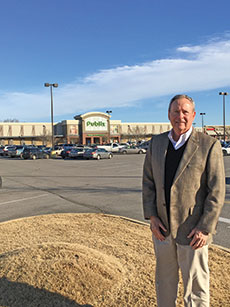 “At that time, living in Pell City, entertainment, restaurants and shopping options were minimal,” Ellison recalled. “To shop for most things, we were having to go to Talladega, Leeds, Birmingham or Oxford. There just weren’t that many choices in Pell City for shopping. You would hear it in the community. People wanted more retail options.”
“At that time, living in Pell City, entertainment, restaurants and shopping options were minimal,” Ellison recalled. “To shop for most things, we were having to go to Talladega, Leeds, Birmingham or Oxford. There just weren’t that many choices in Pell City for shopping. You would hear it in the community. People wanted more retail options.”
Even though he had development experience, he’d never done anything on a scale to match a retail shopping center. But Ellison went to work. He cast his eye to the north side of I-20. It became the Bankhead Crossing development, anchored by a Wal-Mart, followed by Home Depot and dozens more on both sides of the US 231 interchange.
The growth seen today didn’t happen by accident. It took him 14 years to assemble the multiple properties that now comprise what is a sprawling commercial district along that corridor.
Folks learned quickly that Bill Ellison is a persistent man and he is not afraid to solicit help. He welcomes it. From partners to city and county governments to economic development officials and bankers, he skillfully put together a collaborative effort that would become the thriving commercial district you see today.
He obtained option agreements, and those, combined with the Pell City government’s realization that the future growth of the city and its tax base could be realized in that corridor, all worked together to make it happen.
Once he had assembled all the purchase agreements, he had to go to the City of Pell City for help with major hurdles like annexation and the extension of utilities under the interstate.
The city and the county officials realized that the interstate was important to their future economic growth. It was Ellison’s vision, but the city and the county, Ellison’s partners and Ed Gardner Sr., former executive director of the St. Clair EDC, all worked to make it happen.
And there were cold calls, lots and lots of cold calls, to prospective retailers. From that piece of ground with Ellison’s persuasiveness in obtaining letters of intent grew an Arby’s, a Wendy’s, a Hampton Inn, a gas station and a Western Sizzlin’. Ellison had been recruiting the steakhouse for years, and he and his partners actually bought the franchise and opened it. The others soon followed because of the success of Western Sizzlin’.
The story is important, because it speaks volumes about Ellison. It’s about persistence. It’s about teamwork. “It’s about everyone working together – the city, the county, the EDC – were all focused on what had to be done in retail development.” Look at the county’s economic growth, and you see it was a tipping point. “Because of the successes we had, the whole county realized that if every one worked together, we could achieve anything we wanted to achieve.”
“I’m a little bit fearless,” Ellison said. “Looking back on it now at 71 years old … the timing for what we did was perfect. You can work hard. You can work real hard, but you’ve got to have the elected officials believe in you. And you’ve got to have some luck. I’ve had a lot of help and luck along the way,”
He added, “We were fortunate that we had success.”
And there would be more successes to follow, translating to a broader tax base, boosting schools, helping bring new and improved parks and recreation facilities, the Center for Education and the Performing Arts (CEPA), where crowds flock to hear legends like Martha Reeves and the Vandellas bring a “Heat Wave” to Pell City.
These amenities resulted from Ellison and that cooperative effort and enhanced the quality of life not only for Pell City but the region.
“He has been one of the largest growth catalysts that Pell City has ever had, since the opening of Avondale Mills (which opened in the early 1900s),” Smith said.
Look all around Pell City to see more evidence of that. He began with the groundbreaking for an Exxon convenience store. Following, his work became responsible for Walmart Supercenter, Home Depot, Publix, Metro Bank, USAmeribank, Krystal, Arby’s, Wendy’s, Holiday Inn Express, Hampton Inn, Cracker Barrel, Walgreens, Comfort Inn, Golden Rule, Zaxby’s, Dairy Queen, Bojangles, Buffalo Wild Wings and scores of retailers and service businesses. They are not located in just one area, but citywide, benefitting everyone. His developments account for four of the city’s top 10 sales tax generators and no less than 35 percent of total sales tax base.
While Lovejoy tries to fit locals into local niches – like home-owned drug stores – Ellison’s contacts cast a wider net into larger retailers and franchises. Almost all the development on the U.S. 231/I-20 interchange was the result of decades of Ellison’s tireless work. Wal-Mart, Home Depot, a movie theater, three hotels and every fast-food eatery imaginable dot the landscape, Smith said.
“He’s constantly encouraging retailers to come to the market, three or four years before the market is ready,” Smith said. “When the market is just at the verge of being ready, they’ve already heard about Pell City and the market because of Bill Ellison. He is responsible for two of the three largest sales tax generators in Pell City.”
Ellison sometimes tells a self-effacing joke, Smith said, that speaks volumes about the Lexington, Ky., native’s persistence.
“The joke is that many times retailers come to Pell City, not because the market’s large enough, but just so Bill will leave them alone. He is tenacious.”
Big retailers may have their algorithms and mountains of software to help them analyze the viability of a franchise in Pell City, but spreadsheets often miss the mark, Smith said.
“Many times, they don’t get it right, until they just trust in Bill, because he knows that people who shop in Pell City aren’t all from Pell City. He knows there are people who come to the lake (Logan Martin) or spend their summers at the lake – and those numbers don’t show up on a census report. He knows that Pell City’s economic strength is much greater than any demographic report a retailer may run.”
Ellison calls his persistence “moving the rock.”
“Every day you try to move the rock,” he said. “Every day, you try to have a positive push somewhere. Some days you push the rock, and the rock doesn’t move, but some days you push, and the rock does move. But you’ve got to try to move the rock every day. And it’s not just one rock. You have to multi-task.”
Timing, tireless work, teamwork and more than a little luck, made the developments happen, Ellison said. But at its heart, the growth began with countless cold calls, not over days and weeks, but years.
And he had help along the way from the late Don Perry, chairman of the board for Metro Bank, who over the years believed in him, helped him and encouraged him. “I can’t say enough about Don’s leadership, Metro Vice President Richard Knight and the bank’s philosophy in general about putting community first.”
First Bank of Alabama and its president, Chad Jones, have given him help along the way, too, he said.
He cites a lesson he learned in the restaurant business as a key that translated into his success in economic development efforts.
“Restaurants (are) a people business,” he said. “I’m no better than (the dining experience of) my last customer. In the development business it’s the same way. You’re no better than your last transaction. You’ve got to treat people right. You must be honest. You must be fair. It’s about satisfying your customer every single transaction of the day.”
He added, “I want to do something the right way.”
Like Lovejoy, Ellison seems constantly in motion. Ellison fills pages of a legal pad with his weekly to-do list. He works hard, and he plays to win, constantly listening, looking and learning.
That “can-do” work ethic can be traced back to his childhood, he mused. He described himself as a hyperactive child, and when his grandparents would babysit him to allow his parents to go out for the evening, they kept him occupied with puzzles.
The problem solver seen today in Ellison’s approach to business stems from those puzzles he figured out as a child. “Economic development is like a puzzle you have to figure out, making sure all the pieces fit in the right place,” he said.
Finding a way through the obvious maze of economic development in and of itself can be stressful. His release comes in the field, with his bird dogs. On the 2017 United Field Trialers Association circuit, Ellison has the two highest point amateur dogs in the nation. “I get to go out and shoot my gun and let the stress melt off. That’s what I use my bird dogs for.”
Like his dogs, development is a passion.
“Real estate is a business, but it’s a love that I have for chasing things and trying to bring more businesses in here. It’s something I love doing,” he said.
Ellison has an unmistakable love for St. Clair County. And he’s the same kind of cheerleader for the county that Lovejoy is.
“We’ve got a great county,” Ellison said. “My pitch is, St. Clair County is a great county today, and it’s going to be even better in the future.”
With Ellison and Lovejoy leading the effort, that prediction looks to be a self-fulfilling prophecy.
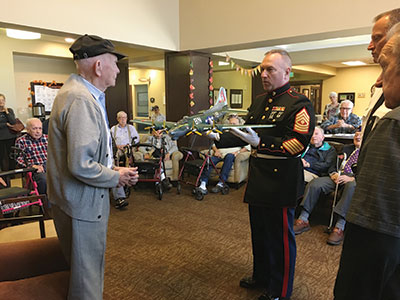
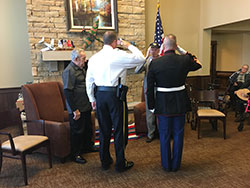 He spoke of his bombing mission to Berlin a month earlier – on May 7 and May 8. “On May 8, we turned around and went back to Berlin and bombed it again. You can’t imagine the devastation.”
He spoke of his bombing mission to Berlin a month earlier – on May 7 and May 8. “On May 8, we turned around and went back to Berlin and bombed it again. You can’t imagine the devastation.”










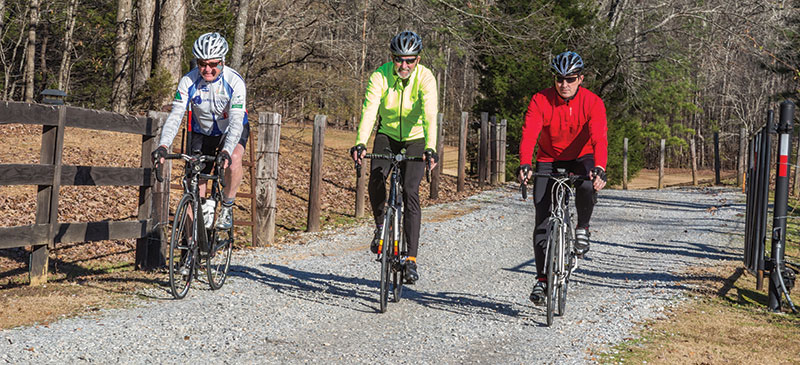

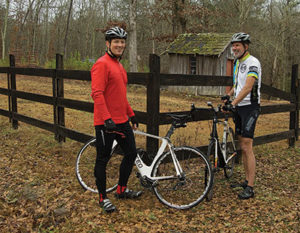 Although Wilson and fellow organizer, Tom Moody, said they were discontinuing the ride for the time being, “I have nothing but good things to say about the people of Moody, and the terrain was lovely,” Moody said. “The positive parts were the generosity and support of the people, particularly the mayor’s office and the chief of police and the government. And the beautiful scenery we had the riders go through it.”
Although Wilson and fellow organizer, Tom Moody, said they were discontinuing the ride for the time being, “I have nothing but good things to say about the people of Moody, and the terrain was lovely,” Moody said. “The positive parts were the generosity and support of the people, particularly the mayor’s office and the chief of police and the government. And the beautiful scenery we had the riders go through it.”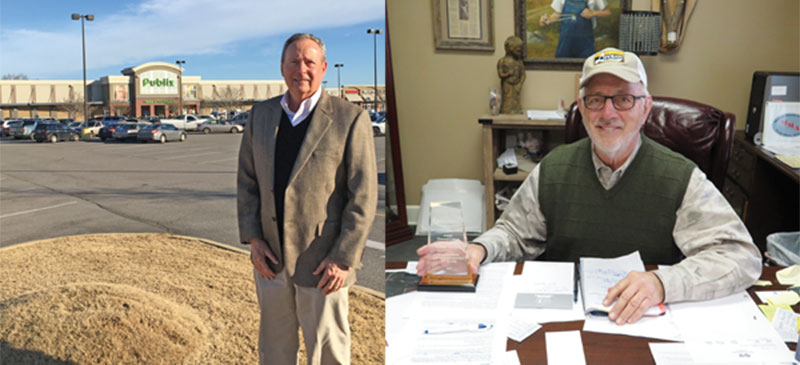
 He makes it his business to get involved with every city government in the county as well as the County Commission, St. Clair Economic Development Council and other entities that share a common goal of moving forward. He knows every mayor and council member in the county by first name, and when he sees a need, he works to fill it.
He makes it his business to get involved with every city government in the county as well as the County Commission, St. Clair Economic Development Council and other entities that share a common goal of moving forward. He knows every mayor and council member in the county by first name, and when he sees a need, he works to fill it. “At that time, living in Pell City, entertainment, restaurants and shopping options were minimal,” Ellison recalled. “To shop for most things, we were having to go to Talladega, Leeds, Birmingham or Oxford. There just weren’t that many choices in Pell City for shopping. You would hear it in the community. People wanted more retail options.”
“At that time, living in Pell City, entertainment, restaurants and shopping options were minimal,” Ellison recalled. “To shop for most things, we were having to go to Talladega, Leeds, Birmingham or Oxford. There just weren’t that many choices in Pell City for shopping. You would hear it in the community. People wanted more retail options.”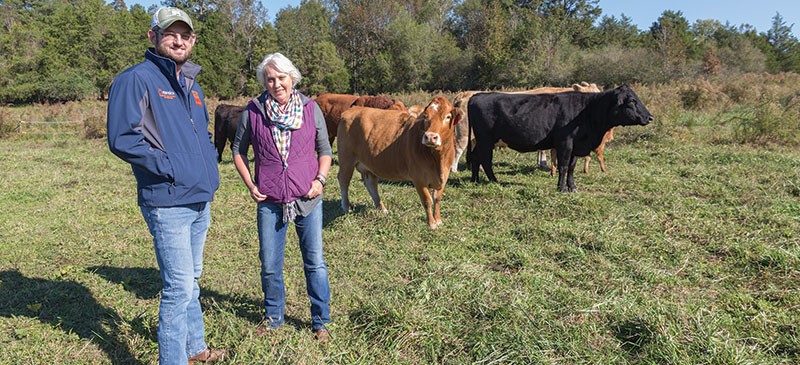
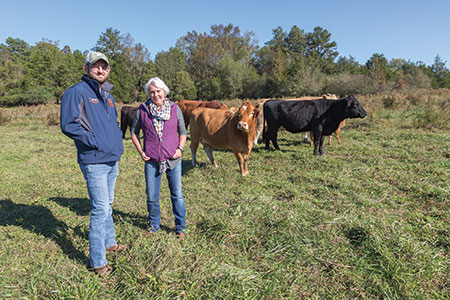
 Nancy Graves is the 4-H Foundation regional agent, while Becky Staples serves as a 4-H agent assistant for St. Clair County. Staples goes into local schools with various programs like Skins & Skulls, a science program that gives fourth-graders an up-close-and-personal look at the structure of wild animals in the woods of St. Clair County. She also conducts a Classroom in the Forest program and takes a group of kids to 4-H camp every summer. Graves is in charge of all volunteer-led clubs, including the 4-H after-school club and specialty clubs that focus on horses, archery and shotguns.
Nancy Graves is the 4-H Foundation regional agent, while Becky Staples serves as a 4-H agent assistant for St. Clair County. Staples goes into local schools with various programs like Skins & Skulls, a science program that gives fourth-graders an up-close-and-personal look at the structure of wild animals in the woods of St. Clair County. She also conducts a Classroom in the Forest program and takes a group of kids to 4-H camp every summer. Graves is in charge of all volunteer-led clubs, including the 4-H after-school club and specialty clubs that focus on horses, archery and shotguns.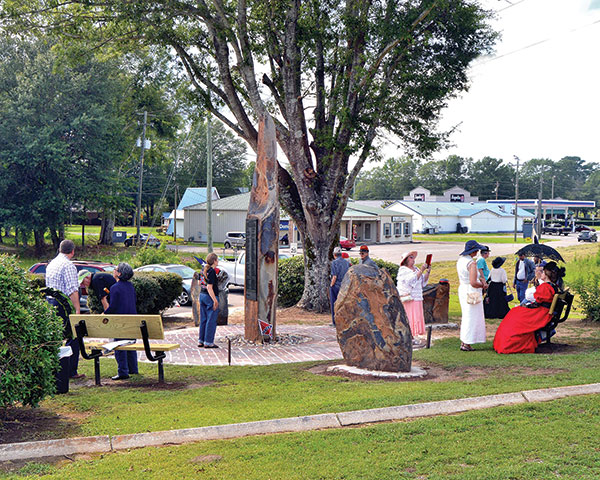
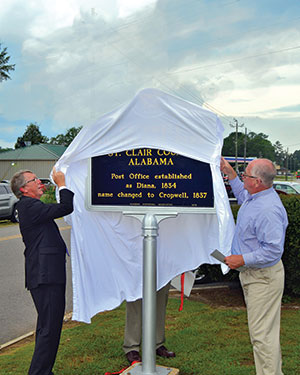 Another speaks of the charter of the local United Daughters of the Confederacy in 1914, and the impoundment of the Coosa in 1946 to form Lake Logan Martin (although this date is a typographical error; should be 1964). A third plaque mentions a cotton gin startup in 1883 and Cropwell Baptist Church in 1889; and the fourth tells of Andrew Jackson’s crossing of the Coosa near Cropwell during the Creek Indian Wars of 1813-14.
Another speaks of the charter of the local United Daughters of the Confederacy in 1914, and the impoundment of the Coosa in 1946 to form Lake Logan Martin (although this date is a typographical error; should be 1964). A third plaque mentions a cotton gin startup in 1883 and Cropwell Baptist Church in 1889; and the fourth tells of Andrew Jackson’s crossing of the Coosa near Cropwell during the Creek Indian Wars of 1813-14.
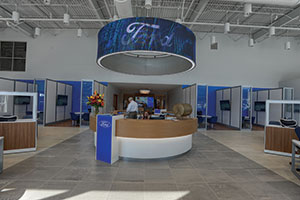 From the expansive showroom to the state-of-the-art service center to quick lane services, it all spells customer service, according to Bailey.
From the expansive showroom to the state-of-the-art service center to quick lane services, it all spells customer service, according to Bailey.